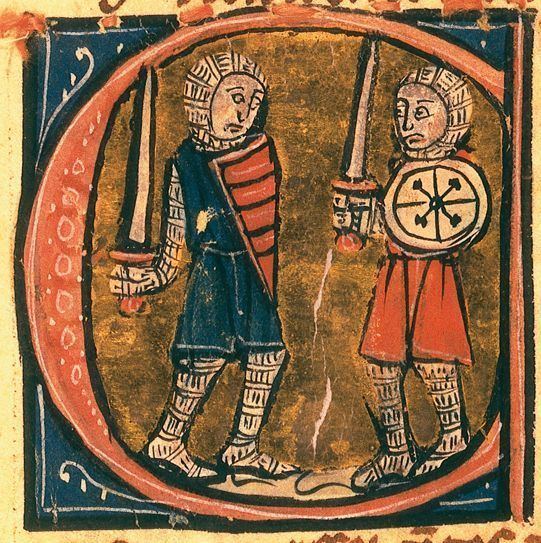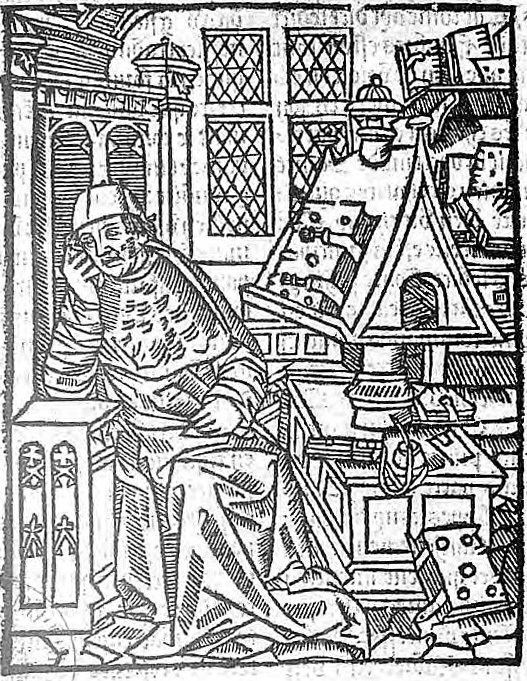Name Chretien Troyes Role Poet | Died 1191, France Movies Perceval le Gallois | |
 | ||
Poems Yvain, the Knight of the Lion, Perceval, the Story of the Grail, Lancelot, Or, The Knight of the Cart, Erec and Enide, Cliges Books Yvain - the Knight of the Lion, Perceval - the Story of the Grail, Lancelot - Or - The Knight of t, Erec and Enide, Cliges Similar People Marie of France - Countess, Eric Rohmer, Eleanor of Aquitaine, Marti de Riquer i Morera, Nestor Almendros | ||
Chr tien de troyes les chevaliers de la table ronde conf rence vid o de michel pastoureau
Chrétien de Troyes ([kʁe.tjɛ̃ də.tʁwa]) (Christian) was a late-12th-century French poet and trouvère known for his work on Arthurian subjects, and for originating the character Lancelot. This work represents some of the best-regarded of medieval literature. His use of structure, particularly in Yvain, the Knight of the Lion, has been seen as a step towards the modern novel. Little is known of his life, but he seems to have been from Troyes, or at least intimately connected with it, and between 1160 and 1172 he served at the court of his patroness Marie of France, Countess of Champagne, daughter of Eleanor of Aquitaine, perhaps as herald-at-arms (as Gaston Paris speculated).
Contents
- Chr tien de troyes les chevaliers de la table ronde conf rence vid o de michel pastoureau
- Chr tien de troyes une vie une uvre mission radio france culture 1989
- Works
- Influence
- Anticipating the modern novel
- References
Chr tien de troyes une vie une uvre mission radio france culture 1989
Works

Chrétien's works include five major poems in rhyming eight-syllable couplets. Four of these are complete: Erec and Enide (c. 1170); Cligès (c. 1176), Yvain, the Knight of the Lion and Lancelot, the Knight of the Cart, the latter two written simultaneously between 1177 and 1181. Yvain is generally considered Chrétien's most masterful work. Chrétien's final romance was Perceval, the Story of the Grail, written between 1181 and 1190, but left unfinished, though some scholars have disputed this. It is dedicated to Philip, Count of Flanders, to whom Chrétien may have been attached in his last years. He finished only 9,000 lines of the work, but four successors of varying talents added 54,000 additional lines in what are known as the Four Continuations. Similarly, the last thousand lines of Lancelot were written by Godefroi de Leigni, apparently by arrangement with Chrétien. In the case of Perceval, one continuer says the poet's death prevented him from completing the work; in the case of Lancelot, no reason is given. This has not stopped speculation that Chrétien did not approve of Lancelot's adulterous subject.

There are also several lesser works, not all of which can be securely ascribed to Chrétien. Philomela is the only one of his four poems based on Ovid's Metamorphoses that has survived. Two short-lyric chansons on the subject of love are also very likely his, but the attribution of the pious romance Guillaume d'Angleterre to him is now widely doubted. It has also been suggested that Chrétien might be the author of two short verse romances called Le Chevalier á l'épée and La Mule sans frein, but this theory has not found much support. Chrétien names his treatments of Ovid in the introduction to Cligès, where he also mentions his work about King Mark and Iseult. The latter is presumably related to the Tristan and Iseult legend, though Tristan is not named. Chrétien's Tristan has not survived, though in the introduction of Cligès, Chrétien himself says that his treatment of Tristan was not well received, possibly explaining why it does not survive. Chrétien's works are written in vernacular Old French, although it is marked by traits of the regional Champenois dialect (which is still fairly similar to the "standard" French of Paris).
Influence

Chrétien's writing was very popular, as evidenced by the high number of surviving copies of his romances and their many adaptations into other languages. Three of Middle High German literature's finest examples, Wolfram von Eschenbach's Parzival and Hartmann von Aue's Erec and Iwein, were based on Perceval, Erec, and Yvain; the Three Welsh Romances associated with the Mabinogion, Peredur, son of Efrawg, Geraint and Enid, and Owain, or the Lady of the Fountain are derived from the same trio. Especially in the case of Peredur, however, the connection between the Welsh romances and their source is probably not direct, and has never been satisfactorily delineated. Chrétien also has the distinction of being the first writer to mention the Holy Grail (Perceval) and the love affair between Queen Guinevere and Lancelot (Lancelot), subjects of household recognition even today.

There is a specific Classical influence in Chrétien's romances the likes of which (The Iliad, The Aeneid, Metamorphoses) were "translated into the Old French vernacular during the 1150s". Foster Guyer argues that specifically Yvain, the Knight of the Lion contains definite Ovidian influence: "Yvain was filled with grief and showed the Ovidian love symptoms of weeping and sighing so bitterly that he could scarcely speak. He declared that he would never stay away a full year. Using words like those of Leander in the seventeenth of Ovid's Epistles he said: 'If only I had the wings of a dove/to fly back to you at will/Many and many a time I would come'."
Anticipating the modern novel
Chrétien has been termed "the inventor of the modern novel" and Karl Uitti argues: "With [Chrétien's work] a new era opens in the history of European story telling… this poem reinvents the genre we call narrative romance; in some important respects it also initiates the vernacular novel." The main quality of the above-mentioned Celtic influences was that of a sort of incompleteness. A "story" could be anything from a single battle scene, to a prologue, to a minimally cohesive tale with little to no chronological layout. Uitti argues that Yvain is Chrétien's "most carefully contrived romance… It has a beginning, a middle, and an end: we are in no doubt that Yvain's story is over". This very method of having three definite parts including the build in the middle leading to the climax of the story is in large part why Chrétien is seen to be a writer of novels five centuries before novels, as we know them, existed.
